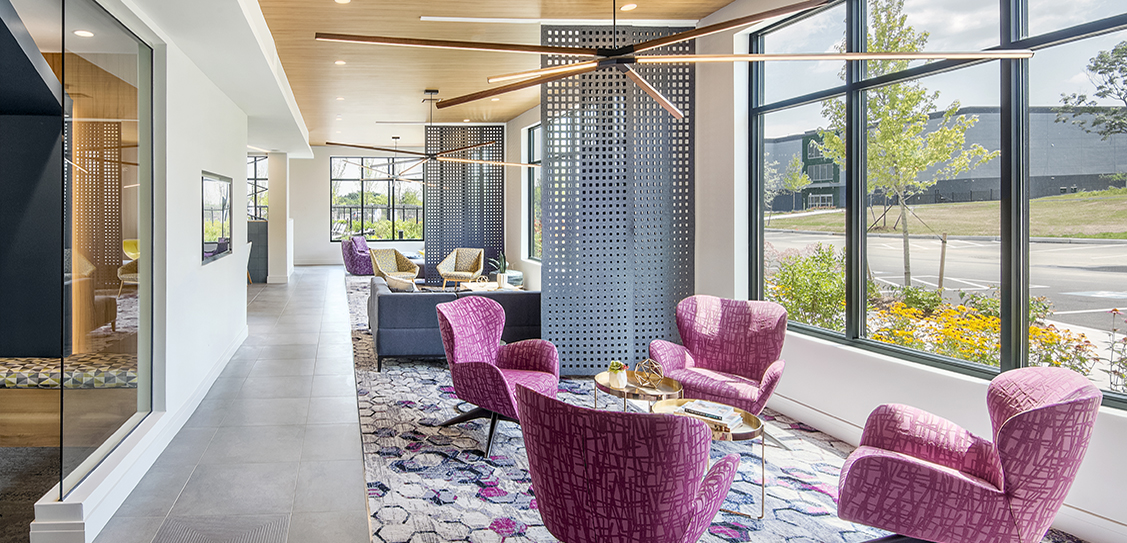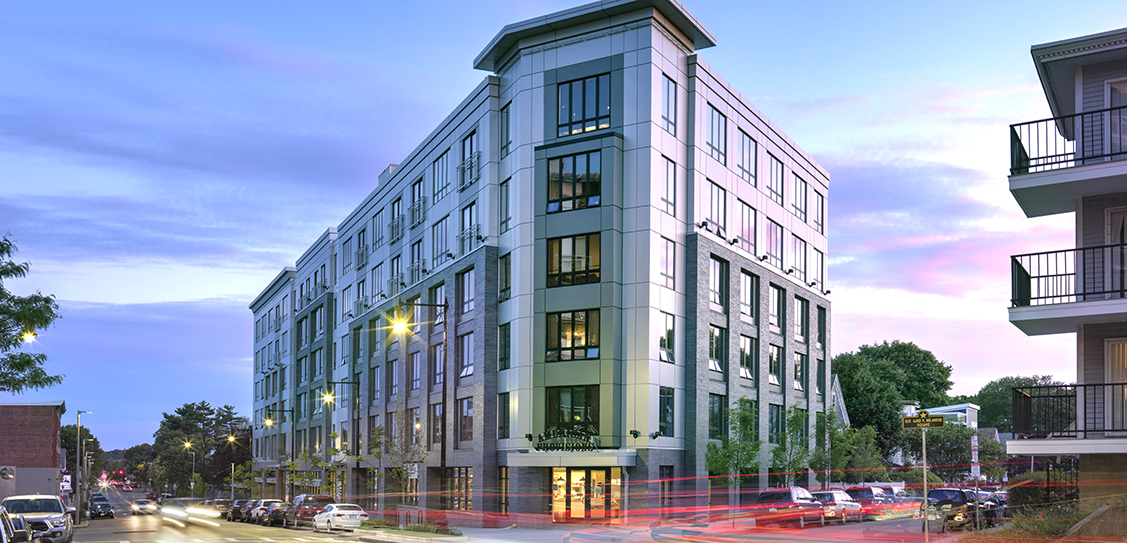Developers place a stronger emphasis on designs that incorporate practical amenities and a creative mix of uses, and that integrate closely into surrounding neighborhoods.
Szymanski
When it comes to shared spaces that add the most value, Szymanski identifies elements such as workspaces with flexible benching systems, community focused retail operations, and landscaped outdoor areas with public uses as some of the key choices seen as the most desirable around the USA.
In addition to traditional amenities such as a fitness center and resident lounge, TAT’s design for Alexan Wrentham, a 240 unit multifamily complex in Wrentham, Massachusetts, also includes workstations that appeal to a growing demographic of remote workers and freelancers.
For developers and tenants alike, accessible outdoor space is more valued than ever. Clippership Wharf, a 12 acre, 478 unit community developed by Lendlease in East Boston, offers residents and community members access to a harborwalk, beachfront area and floating dock with a kayak launch, a level of direct waterfront connection that’s rare for a major city, and that also brings resiliency benefits.
Walkable or transit oriented properties with easy access to public transit, restaurants, and cultural attractions remain vital elements in any development portfolio. In addition, TAT’s Duggan and his colleagues find value in tapping into local character.
More developers recognize that a contextual architectural approach drives better results. Projects that respond to the size, scale, and materials of existing neighborhoods have much stronger and more enduring curb appeal.
M. Duggan
A single, 500ft long structure, TAT’s design for AvalonBay's Avalon Residences at the Hingham Shipyard fits into the surrounding waterfront residential community thanks to its coastal vernacular style. This contextual approach, with distinctive gables and a mix of shingle siding and contrasting dark metal façade elements, helps to break up the project’s scale and allows it to read as a series of smaller compositions.
Strategic combinations of adaptive reuse and new construction can achieve a similar result, maintaining the character of a streetscape while enhancing a development site’s value with additional residential units. In Boston’s South End, TAT is adding a seven story contemporary addition to an historic warehouse at 100 Shawmut. The project brings 138 condominium units, a park, and café space to this burgeoning urban destination.
Similarly, Duggan points out that clever design moves can help existing buildings fit into their surroundings even better, while also unlocking unexpected and appealing new housing opportunities. In Boston’s desirable Beacon Hill neighborhood, The Archer Residences transforms two former Suffolk University structures, adding townhouse style entrances at street level and two contemporary rooftop penthouses above.
The best multifamily projects succeed because they respond to the needs of their residents and the surrounding community. Thoughtfully designed and programmed properties are a perfect opportunity for the development community to create lasting value.
Szymanski



